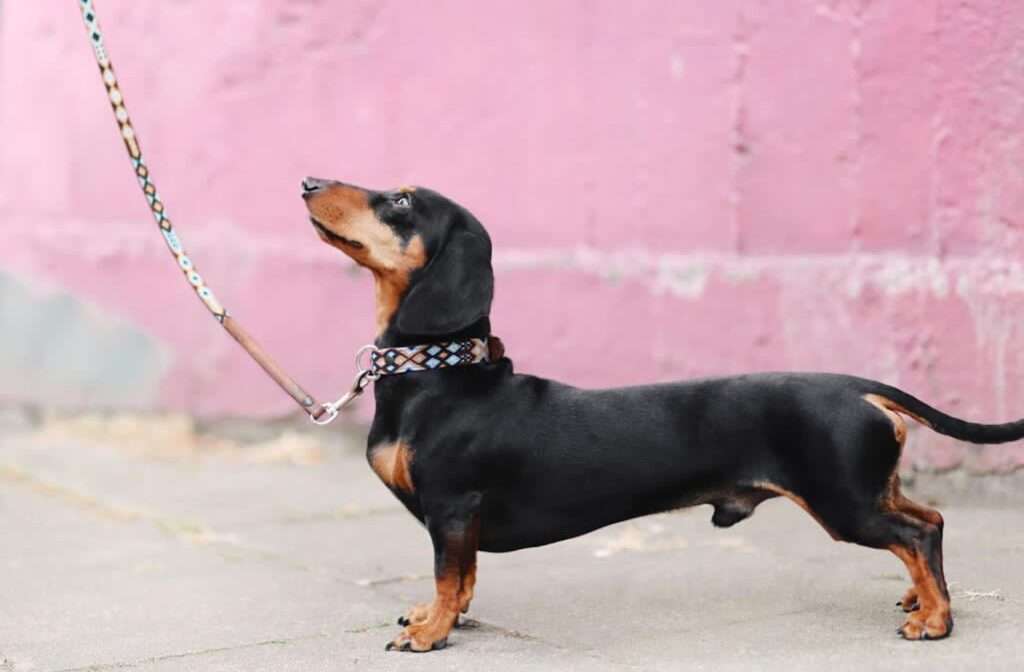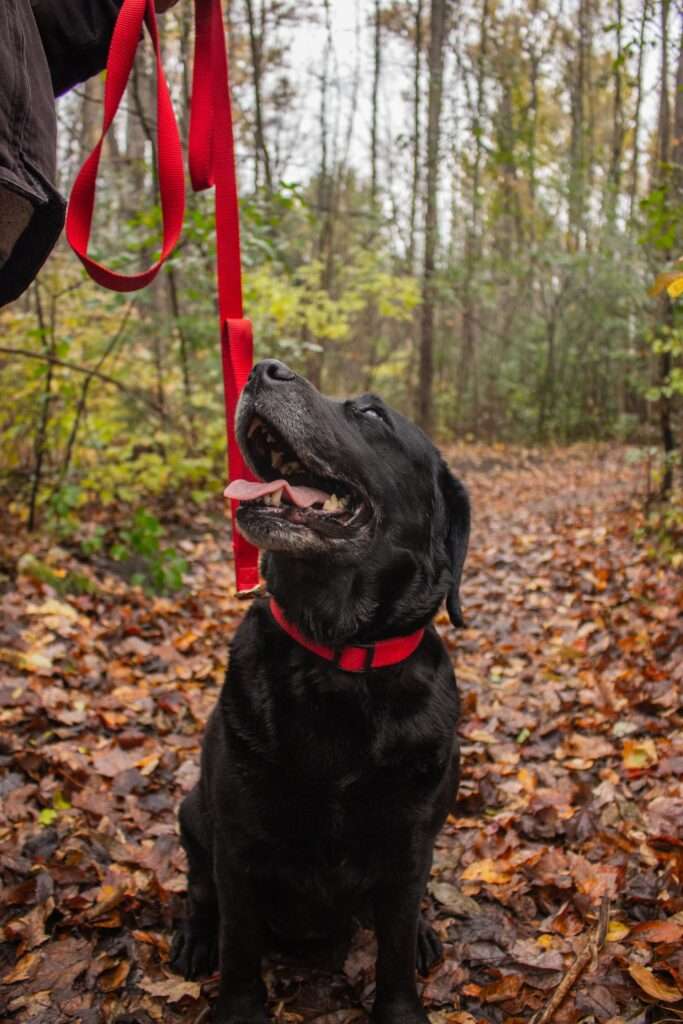How Tight Should a Dog Collar Be? Avoid These Common Mistakes
Your furry friend’s safety is your utmost concern as a pet owner. From wagging tails to joyful barks, you want to ensure their every adventure is filled with happiness and security. But did you know that something as seemingly simple as a dog collar can play a vital role in keeping your canine companion safe and comfortable?
Imagine a collar that fits just right, allowing your pup to strut with confidence, while avoiding the pitfalls of an ill-fitting one that could lead to discomfort or even injury. In this guide, we’ll dive into the fascinating world of dog collar fitting. We’ll unravel the secrets of determining the perfect tightness, explore the consequences of a misfit collar, and equip you with essential safety tips for various collar types.
So, fasten your seatbelt, or rather, collar, as we embark on a journey to discover the art of the perfectly fitted dog collar, ensuring your four-legged friend’s well-being at every step!
Factors to Consider When Determining Your Dog Collar Fit

Finding the right fit for your dog’s collar is crucial for their comfort, safety, and overall well-being. When determining the appropriate tightness, it’s important to take several factors into account:
- Breed and Size: Different dog breeds and sizes have varying neck proportions. Smaller breeds and puppies generally require a looser collar to accommodate their delicate necks, while larger breeds may need a slightly tighter fit to ensure the collar stays in place.
- Age and Health: Consider your dog’s age and any existing health conditions. Older dogs or those with neck injuries may benefit from a looser collar to avoid placing additional strain on their necks. Puppies, on the other hand, may need a snugger collar to prevent them from slipping out as they grow.
- Activity Level and Behavior: Your dog’s activity level and behavior during walks or outdoor activities play a role in collar fit as well. Dogs that tend to pull on the leash or are highly active may require a tighter collar to prevent accidental escapes. However, it’s crucial to find a balance where the collar is secure but not constricting.
- Type of Collar: Different types of collars have specific fit requirements. For instance, head collars, like gentle leaders or halters, should fit snugly around the dog’s muzzle and behind the ears to provide proper control and guidance. Harnesses, on the other hand, should fit comfortably but not excessively tight, ensuring your dog can move and breathe without restriction.
By considering these factors, you can determine the appropriate tightness for your dog’s collar, providing them with the best fit possible. Remember, each dog is unique, so it may take some trial and error to find the optimal fit that keeps your furry friend comfortable, secure, and safe.
If you need further guidance or are uncertain about finding the right collar fit for your dog, it’s always a good idea to consult with a professional dog trainer, veterinarian, or a knowledgeable pet store associate. They can offer personalized advice based on your dog’s specific needs and help you make an informed decision.
Methods for Checking Your Dog Collar Fit
Ensuring that your dog’s collar fits correctly is essential for their safety, comfort, and overall well-being. Here are a few methods you can use to check if your dog’s collar fits properly:
- The “Two Finger” Rule: This is a commonly used method to assess collar tightness. Place two fingers between the collar and your dog’s neck. The collar should be snug but not too tight. You should be able to fit two fingers comfortably between the collar and your dog’s skin. If you cannot fit two fingers or if there is excess space, you may need to adjust the collar accordingly.
- The “Snug But Not Tight” Test: Gently pull the collar slightly away from your dog’s neck. There should be enough space to fit one finger between the collar and your dog’s skin, but not more than that. The collar should be secure enough to prevent slipping or escaping, but not so tight that it causes discomfort or restricts your dog’s movement.
- The “Fit and Forget” Approach: Once you have adjusted the collar to the correct tightness, it’s important to observe your dog’s behavior and comfort level. Leave the collar on for a little while, ideally during a period of activity or play, and monitor your dog’s reactions. If your dog appears comfortable, can move freely, and doesn’t show signs of discomfort or irritation, then the collar is likely fitted correctly.
Remember, the goal is to strike a balance between a snug fit and allowing your dog to feel comfortable and unrestricted. It’s important to regularly check the collar’s fit, especially during periods of growth or weight change, as you may need to make adjustments over time.
Consequences of Improper Dog Collar Fit

Fitting your dog with the right collar size is crucial for their well-being and safety. Here are some potential consequences of an improperly fitting dog collar:
- Discomfort and Pain: A collar that is too tight can cause significant discomfort and pain for your dog. It may rub against their skin, leading to irritation, chafing, and even sores. Discomfort and pain can result in behavioral issues, reluctance to go for walks, and an overall decrease in your dog’s quality of life.
- Risk of Neck and Throat Injury: If a collar is too tight, it can exert excessive pressure on your dog’s neck and throat. This can lead to injuries such as bruising, muscle strain, or even damage to the trachea. In severe cases, it may impede your dog’s ability to breathe properly, causing respiratory distress.
- Behavioral Issues: Dogs in pain or discomfort may exhibit behavioral changes. They may become anxious, aggressive, or reactive towards people or other animals. Behavioral issues arising from an improperly fitting collar can impact your dog’s socialization, training, and overall temperament.
- Potential for Escape or Slipping Out: On the other hand, if the collar is too loose, your dog may be able to slip out of it, potentially putting them at risk of getting lost or injured. A loose collar also increases the chances of the collar getting caught on objects, leading to accidents or strangulation.
To prevent these consequences, it’s essential to regularly check and adjust your dog’s collar fit. Pay attention to signs of discomfort or irritation, such as excessive scratching, hair loss, or changes in behavior. Always aim for a collar that is snug but not overly tight, allowing your dog to move comfortably while ensuring it won’t slip off.
Safety Tips for Different Types of Dog Collars
Different types of collars require different levels of tightness and have specific safety considerations to keep in mind. Here are some tips for using different types of collars safely:
- Flat collar: A flat collar is a basic collar that can be used for everyday wear. Make sure the collar fits snugly but is not too tight, and always attach a leash to the collar’s D-ring. Check the collar regularly for signs of wear and tear, and replace it as needed.
- Martingale collar: A martingale collar is designed to prevent your dog from slipping out of the collar while still providing some level of comfort. Make sure the collar fits snugly but is not too tight, and adjust the size of the collar to fit your dog’s neck properly. Never leave a martingale collar on your dog unsupervised.
- Head collar: A head collar is designed to give you more control over your dog’s movements during walks. Make sure the collar fits snugly but is not too tight, and use a leash with a second point of attachment, such as a regular collar or harness. Make sure your dog is properly introduced to the head collar before using it on walks.
- Harness: A harness is a good option for dogs who tend to pull on their leash, as it distributes the pressure evenly across the dog’s body. Make sure the harness fits snugly but is not too tight, and choose the right type of harness for your dog’s breed and size. Check the harness regularly for signs of wear and tear, and replace it as needed.
Remember, while these collars may have specific uses, it’s essential to prioritize your dog’s comfort, safety, and well-being. Seek guidance from professionals when using specialized collars, and always monitor your dog’s response and behavior to ensure they are comfortable and not experiencing any distress.
Conclusion
Finding the proper fit for your dog’s collar is crucial for their safety and overall comfort. By taking into account factors such as breed, size, age, activity level, behavior, and collar type, you can determine the appropriate tightness. Utilizing methods like the “two finger” rule or the “snug but not tight” test will help ensure a proper fit.
It’s important to recognize the potential consequences of an improperly fitting collar. These include discomfort, pain, risk of injury to the neck and throat, behavioral issues, and the potential for escape. Regularly checking the collar’s fit and observing your dog’s behavior and comfort level is essential.
Different types of collars have specific safety considerations. For a flat collar, ensure it fits snugly but comfortably, and always attach a leash to the collar’s D-ring. Martingale collars require proper adjustment and should never be left on an unsupervised dog.
Introduce a head collar gradually, using positive reinforcement, and use a leash with a second point of attachment. When using a harness, choose the appropriate type, ensure a proper fit, and regularly inspect for wear and tear.
By following these guidelines and prioritizing your dog’s safety, you can select the right collar and fit for your furry companion. Remember, if you have any concerns or questions about collar fit or usage, seek guidance from professionals, such as veterinarians or dog trainers, who can provide expert advice tailored to your dog’s specific needs.
Frequently Asked Questions
Q: What is the correct tightness for a dog collar?
A: The correct tightness for a dog collar is snug but not too tight. You should be able to fit two fingers comfortably between the collar and your dog’s neck.
Q: Can a collar that is too tight be harmful to my dog?
A: Yes, a collar that is too tight can be harmful to your dog. It can cause discomfort, skin irritation, and even restrict your dog’s breathing and movement. It’s important to ensure the collar is properly fitted to avoid any potential harm.
Q: How can I measure the right size for my dog’s collar?
A: To measure the right size for your dog’s collar, use a soft measuring tape or a piece of string and wrap it around the base of your dog’s neck, just above the shoulders. Add about 2 inches to the measurement to ensure a comfortable fit.
Q: Should I check my dog’s collar tightness regularly?
A: Yes, it’s important to check your dog’s collar tightness regularly, especially if your dog is still growing or if they have gained/lost weight. As your dog’s size changes, you may need to adjust the collar to maintain a proper fit.
Q: Are there any signs that my dog’s collar is too tight?
A: Yes, there are signs that your dog’s collar may be too tight. These include excessive rubbing or irritation on the neck, hair loss, difficulty breathing, or behavioral changes like increased anxiety or aggression. If you notice any of these signs, you should loosen or adjust the collar immediately.
Q: Are there any specific collar types that are safer or more comfortable for dogs?
A: Collars made of soft materials like nylon or leather are generally more comfortable for dogs. Martingale collars and harnesses are also considered safer options for dogs that tend to pull or have respiratory issues. However, it’s important to choose a collar that fits your dog properly, regardless of the type.
Q: Can I leave a dog collar on my dog all the time?
A: While it’s common for dogs to wear collars all the time, it’s recommended to remove the collar periodically, especially during rest or unsupervised times. This allows the skin to breathe and prevents any potential collar-related issues.
Q: Should I consult a professional for assistance in fitting my dog’s collar?
A: If you’re unsure about fitting your dog’s collar properly or have any concerns, it’s always a good idea to consult a professional, such as a veterinarian or a professional dog trainer. They can provide guidance and ensure your dog’s collar is fitted correctly.
Remember, the primary goal is to ensure your dog’s comfort and safety, so regularly check the collar’s fit and adjust it as necessary.




